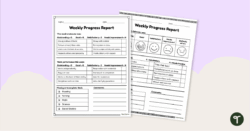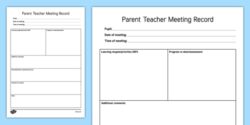Helping young learners overcome reading challenges is one of the most rewarding aspects of elementary education. We all know how crucial strong reading skills are for a child’s overall academic success and self-confidence. When a student needs extra support, a targeted reading intervention plan becomes their lifeline, guiding them towards literacy proficiency. But how do we truly know if these interventions are making a difference, and how do we effectively communicate that progress to everyone involved?
This is where a well-structured progress report steps in, acting as a vital bridge between intervention specialists, classroom teachers, parents, and most importantly, the student’s journey. It’s not just a piece of paper; it’s a detailed narrative of effort, growth, and the strategic steps being taken to foster essential reading abilities. Without clear, consistent reporting, even the most effective interventions can feel disconnected and their impact harder to track.

Imagine having a clear, concise document that encapsulates a student’s intervention journey, highlighting their strengths, areas for growth, and the specific strategies employed. That’s the power of an elementary reading intervention progress report template. It standardizes information, ensures all key stakeholders are on the same page, and helps drive data-informed decisions, making the intervention process more efficient and ultimately, more successful for every child.
Why an Effective Progress Report is Crucial for Reading Intervention
When we talk about reading intervention, we’re discussing a focused, often intensive effort to help a child catch up to their peers. This process involves specific goals, targeted strategies, and a significant investment of time and resources. An effective progress report isn’t merely an administrative task; it’s a cornerstone of successful intervention, providing a snapshot of a student’s journey and guiding future actions. It ensures accountability, facilitates open communication, and helps to validate the efforts of both the student and the educators.
One of the primary benefits is clear communication with parents. They are key partners in their child’s education and often want to understand the specifics of the intervention: what skills are being worked on, what strategies are being used, and most importantly, how their child is performing. A comprehensive report can demystify the intervention process, allowing parents to see tangible evidence of progress, celebrate small victories, and understand areas where their child might still need support at home. This shared understanding strengthens the home-school connection and builds a collaborative environment.
Beyond parents, these reports are indispensable for other educators. The classroom teacher, for instance, needs to know what specific reading skills are being targeted in intervention so they can reinforce those skills in the general education setting. If a student is working on decoding CVC words in intervention, the classroom teacher can be mindful of providing similar practice or recognizing progress in the classroom. This continuity ensures that the intervention isn’t isolated but integrated into the student’s broader learning experience, maximizing its effectiveness.
Moreover, a well-designed progress report serves as an invaluable tool for data collection and goal tracking. Reading interventions are typically driven by specific, measurable goals, whether it’s increasing reading fluency, improving comprehension, or mastering phonics skills. The report systematically documents performance against these goals, using assessment data to show growth over time. This data is critical for evaluating the efficacy of the intervention strategies themselves. If a student isn’t making expected progress, the report provides the evidence needed to prompt a re-evaluation of the approach, allowing educators to adjust strategies as needed.
Ultimately, a strong progress report ensures that the intervention remains student-centered and data-driven. It transitions anecdotal observations into concrete evidence, making the process transparent and purposeful. For anyone looking to implement or refine their documentation process, utilizing a solid elementary reading intervention progress report template can streamline these vital functions, ensuring consistency and thoroughness across all students receiving support.
Key Components of a Comprehensive Progress Report
- Student Information: Basic details like student name, grade, intervention period, and primary teacher.
- Intervention Details: Specific program or strategies used, frequency, duration, and setting of the intervention.
- Progress Towards Goals: Clear statements of individual student goals and measurable data indicating progress or lack thereof.
- Assessment Data: Results from pre-assessments, ongoing formative assessments, and any benchmark assessments used.
- Areas of Strength and Areas for Growth: Narrative descriptions of what the student does well and what skills still need development.
- Recommendations and Next Steps: Suggestions for continued support in the classroom or at home, and future intervention plans.
- Parent/Guardian Signature: A section for acknowledgment and comments from the family.
Each of these components contributes to a holistic view of the student’s reading journey, making the report not just a record, but a living document that informs and empowers everyone involved. It encourages a collaborative approach, ensuring that all stakeholders are aligned in supporting the student’s reading development.
Crafting Your Own Elementary Reading Intervention Progress Report Template
Developing or adapting an elementary reading intervention progress report template is a proactive step towards enhancing the effectiveness and communication surrounding your reading interventions. The process doesn’t have to be daunting; it primarily involves considering the information most crucial to track and report, and then organizing it in a logical, user-friendly format. Start by brainstorming the essential data points you need for each student, from their initial assessment scores to their current progress on specific reading sub-skills.
Think about the various audiences who will read this report: parents, general education teachers, administrators, and possibly the students themselves. Your template should strike a balance between providing sufficient detail for educators and being easily understandable for families. Consider including sections that allow for both quantitative data, such as scores and percentages, and qualitative observations, offering a richer narrative of the student’s learning process. This comprehensive approach ensures that the report offers a full picture of the student’s strengths and areas needing continued focus.
Finally, remember that a template is a living document that can evolve over time. After using your initial elementary reading intervention progress report template for a few reporting cycles, gather feedback from colleagues and parents. Were there any missing sections? Was anything unclear? Adjustments based on this feedback will help refine your template, making it an even more powerful tool for tracking student progress and fostering effective communication in your reading intervention program.
The commitment to regular, clear communication through a well-designed progress report is a testament to the dedication we have for our students’ literacy development. It transforms the often complex journey of reading intervention into a transparent, collaborative, and ultimately more successful experience for every child. By providing consistent updates on progress and strategies, we empower parents and educators alike to be active participants in nurturing young readers.
Ultimately, a thoughtful approach to reporting not only tracks academic growth but also reinforces the belief in every student’s potential to become a confident, capable reader. It’s an investment in their future, ensuring that the foundational skill of reading is solidified, opening doors to endless learning opportunities and fostering a lifelong love for books.



